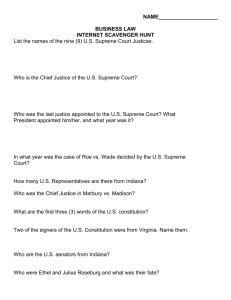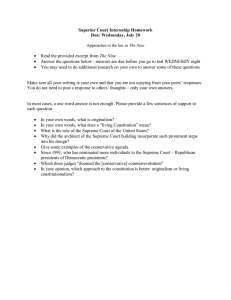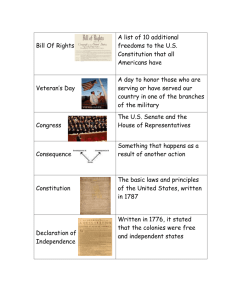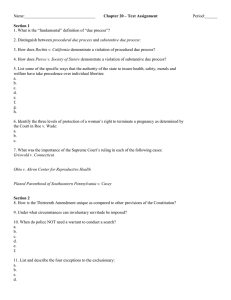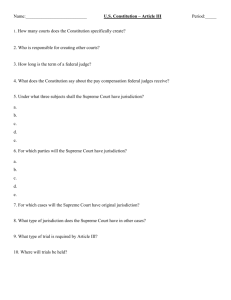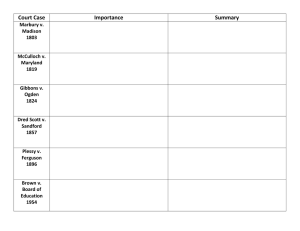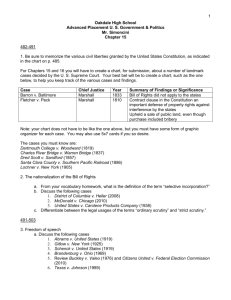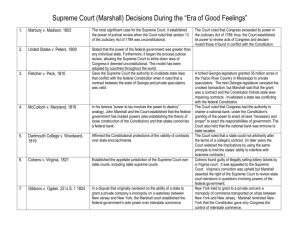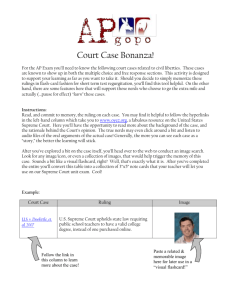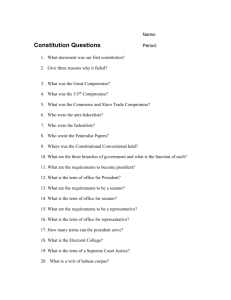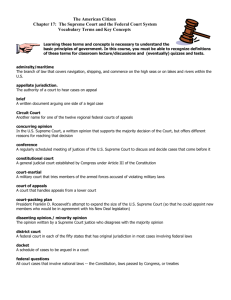Link to study guide
advertisement
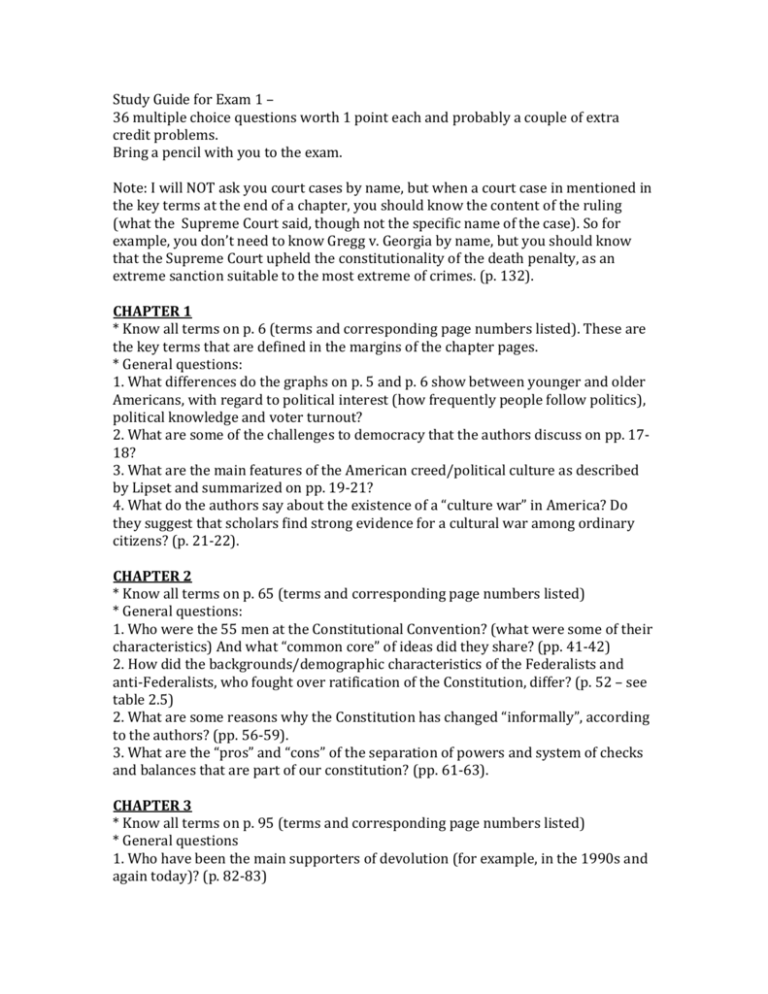
Study Guide for Exam 1 – 36 multiple choice questions worth 1 point each and probably a couple of extra credit problems. Bring a pencil with you to the exam. Note: I will NOT ask you court cases by name, but when a court case in mentioned in the key terms at the end of a chapter, you should know the content of the ruling (what the Supreme Court said, though not the specific name of the case). So for example, you don’t need to know Gregg v. Georgia by name, but you should know that the Supreme Court upheld the constitutionality of the death penalty, as an extreme sanction suitable to the most extreme of crimes. (p. 132). CHAPTER 1 * Know all terms on p. 6 (terms and corresponding page numbers listed). These are the key terms that are defined in the margins of the chapter pages. * General questions: 1. What differences do the graphs on p. 5 and p. 6 show between younger and older Americans, with regard to political interest (how frequently people follow politics), political knowledge and voter turnout? 2. What are some of the challenges to democracy that the authors discuss on pp. 1718? 3. What are the main features of the American creed/political culture as described by Lipset and summarized on pp. 19-21? 4. What do the authors say about the existence of a “culture war” in America? Do they suggest that scholars find strong evidence for a cultural war among ordinary citizens? (p. 21-22). CHAPTER 2 * Know all terms on p. 65 (terms and corresponding page numbers listed) * General questions: 1. Who were the 55 men at the Constitutional Convention? (what were some of their characteristics) And what “common core” of ideas did they share? (pp. 41-42) 2. How did the backgrounds/demographic characteristics of the Federalists and anti-Federalists, who fought over ratification of the Constitution, differ? (p. 52 – see table 2.5) 2. What are some reasons why the Constitution has changed “informally”, according to the authors? (pp. 56-59). 3. What are the “pros” and “cons” of the separation of powers and system of checks and balances that are part of our constitution? (pp. 61-63). CHAPTER 3 * Know all terms on p. 95 (terms and corresponding page numbers listed) * General questions 1. Who have been the main supporters of devolution (for example, in the 1990s and again today)? (p. 82-83) 2. What is meant by a “mandate” and why don’t states like them sometimes? Consider mandates such as the Clean Air Act and American with Disabilities Act (p. 86-88). 3. Do the authors believe that the federal system has contributed to democracy? (pp. 90-92) What are the advantages and disadvantages that they see? CHAPTER 4 * Know all terms on p. 140 (terms and corresponding page numbers listed) *General questions: 1. What has the Supreme Court ruled with regard to free speech as it relates to money in campaigns? (p. 119) 2. What is the basis for a “right to privacy? What has the Supreme Court ruled about restrictions on abortion (in its 1973 ruling, Roe v. Wade, and afterwards)? (pp. 135136) CHAPTER 5 * Know all terms on p. 177 (terms and corresponding page numbers listed) * General questions: 1. What are some ways that federal laws (such as the Civil Rights Act, the Equal Pay Act, and the Education Act of 1972) and the Supreme Court have protected women against gender discrimination? (p. 162-166, starting with “The Second Feminist Wave”).
